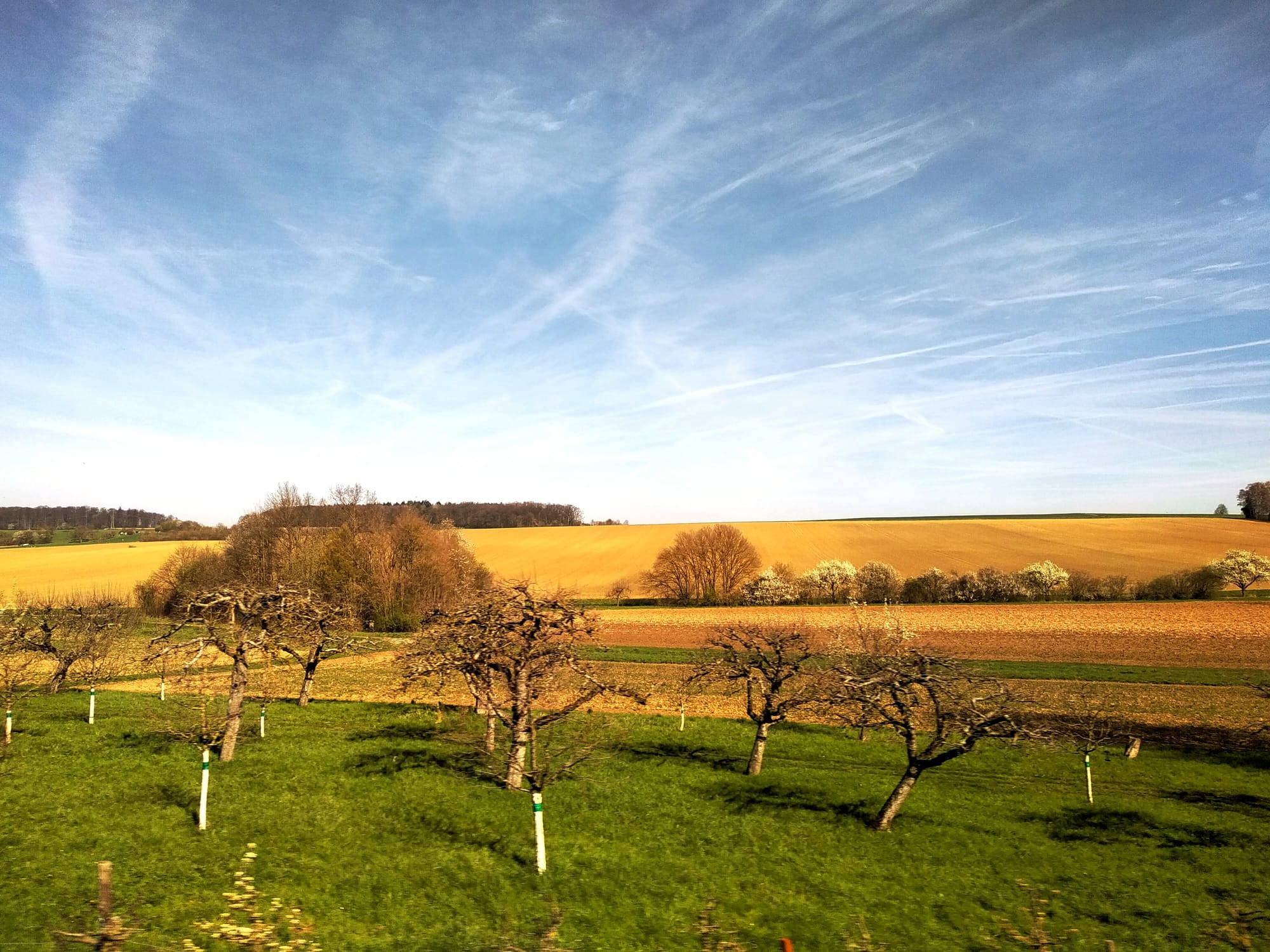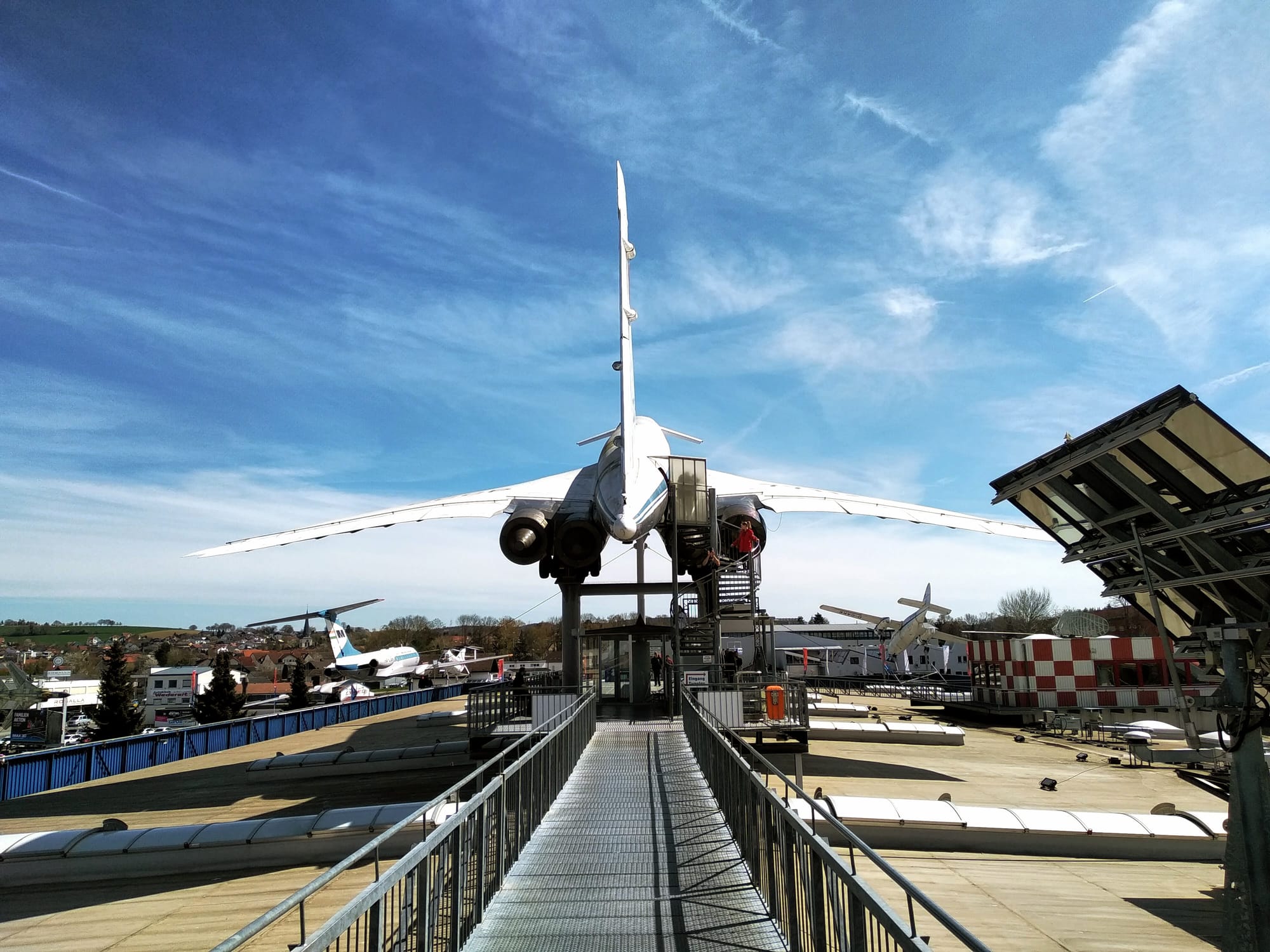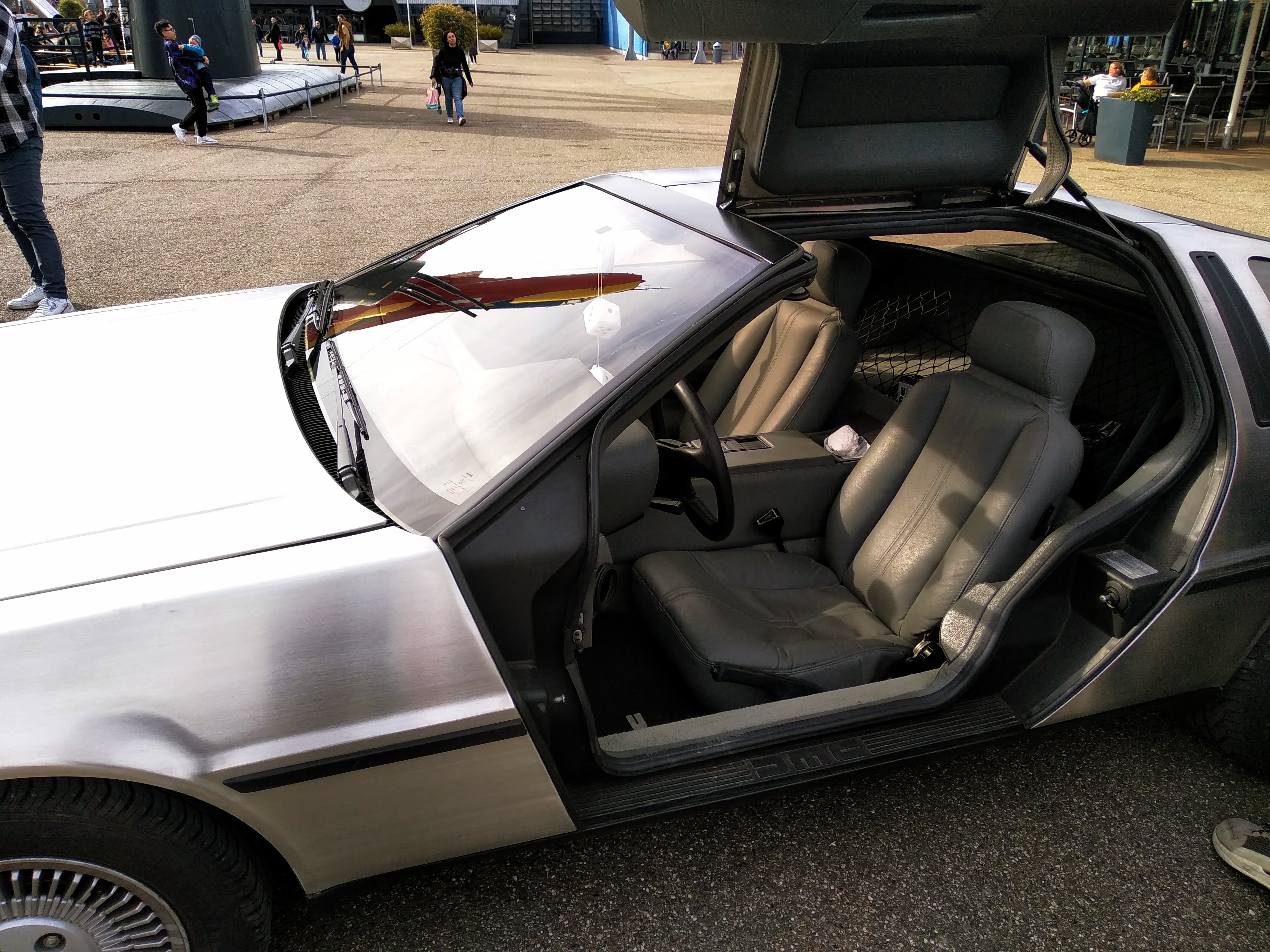Two months, day thirty-eight: Sinsheim
Where we're going, we don't need roads.

This was a special treat for me.
I don't remember when exactly I first learned of the existence of the Tupolev Tu-144. I suppose it must have been some time around 2003 or so when Concorde was retired, and it's held a certain fascination for me ever since. I was therefore very excited indeed back in March when a photo of Hostess holding two complimentary tickets for the Technik Museum in Sinsheim arrived in Telegram, like some kind of siren call for me to visit.
We walked eagerly to the railway station, one of us perhaps more eagerly than the other, to catch a morning train to Heilbronn where we changed for Sinsheim Museum/Arena, a station with its own museum or possibly a museum with its own station.

The ride was pretty thanks to bright sunshine and lovely blue skies, along the river and through the countryside stopping at places whose names start with Bad. This does not, in fact, indicate that the town should be avoided for it has been naughty, but instead indicates a the presence of a spa or some other watery therapeutic centre; Bad is the German word for bath, and towns are awarded Bad status if they meet various criteria.
The Technik Museum Sinsheim opened in 1981. It has more than 3,000 exhibits in an exhibition area of more than 50,000m2, both indoors and outdoors. There's also an IMAX 3D theatre, but we didn't visit that. It is the largest privately owned museum in Europe. A Tupolev Tu-144 has been on display there since 2001 and since Air France donated a Concorde in 2003, it's the only place where both are shown together.
On arrival, Concorde and Concordski dominate the view from the station and on approach to the museum proper it's clear that a lot of the exhibits can be seen without even having to enter the paid-for area, although those that are open for exploration require a valid ticket to enter the hall that provides access to the staircases up to the airframes. An autobahn runs past the museum as well, and the tail fin of a Boeing 747 is clearly visible to passers by, though in reality there is no 747 to be seen as the rest of it is in the sister museum in Speyer.
Another time.
We idled away a good hour or two looking at the vast array of sports cars and American dream cars in the first hall, as well as quite a lot of time wandering through the military exhibits. This was surprising and we'd been lured to that part of the museum only by the presence of a massive steam locomotive which would occasionally do its party piece when someone put a coin into the slot, but wandered round because it seemed silly to ignore things that were there. From time to time, someone elsewhere would bring something musical, one of many barrel organs or pianolas, to life and our attentions would be distracted as we tried to locate the sources of upbeat jollity that contrasted starkly with the tanks and guns we'd somehow found ourselves surrounded by.
After cars, trains, tanks, organs, Beetles, and guns, we found ourselves on the roof of the second hall, The Flight Deck, waiting our turn to enter and explore the various aircraft sitting in the sky, all accessed by windy staircases. They are all installed at an awkward cant, perhaps to give an idea of what they were like to be on in flight. We should probably have started here really as by the time we got to Concorde and Concordksi, things were really rather busy.
Although the presence of other museum-goers was annoying in this regard, it was also quite useful because fighting one's way through the aisles of French and Soviet luxury supersonic airliners showed just how cramped and unluxurious both aircraft actually were in service. In the end we reasoned that the actual luxury of Concorde when it was in service was that the flight was mercifully short and you wouldn't have to sit in the tiny seats for very long.
Donwstairs there are various things to see, from the four massive Rolls-Royce/Snecma Olympus 593 that powered Concorde right down to light fittings and passenger sensors that are displayed next to them. There's also a relaxation area where one can sit in a Concorde seat before going off to look at something else exciting.

Bigger and faster than Concorde, the Tupolev Tu-144 was the world's first commercial super-sonic airliner, beating the former to the skies by two months. It also beat Concorde to flying super-sonic by four months, and was the world's first commercial transport to exceed Mach 2. The engines are closer to the fuselage than on Concorde which led to some problems for passengers who could only enjoy conversation during their flight by shouting at each other, as well as for the pilots who needed to deploy (cute) wings behind the cockpit at low speeds to improve stability. I think these make it look like a cute friendly hornet.
Ultimately, the Concorde would go on to be the world's most successul supersonic passenger airliner a catastrophic crash of the Tupolev in 1973 at the Paris airshow, itself the subject of a whole barrage of speculation, and some reliability issues. It operated as a passenger aircraft from November 1977 for seven only months until another crashed during a test flight, which saw the already-beleaguered Tupolev withdrawn from passenger service and the remaining 14 aircraft relegated to postal services until 1983, when the project was cancelled.
Its final flight, after years of being used to train astronauts or for reseach by Nasa into supersonic flight, occurred in 1999, only a few years before Concorde was retired. Both were disassembled, transported to Sinsheim by land, then reassembled and put into place by massive cranes.
After lunch at the Frit Stop (!), we had a go on a slide down from one of the aircraft, then walked around more cars, had a look at a Delorean, enjoyed the Maybachs (Wilhelm a native of Heilbronn), enjoyed more barrel organs, looked at a wall of sewing machines, walked around the shop, bought a fridge magnet and some things to give to people.
The third hall contains a temporary exhibiton, currently a celebration of 100 years of Le Mans. We looked at that and then had a coffee and a pretzel, enjoyed another Delorean (working, driving around), then when we could no longer function properly, took the train home where we briefly marvelled at Hans Hilficker's work, before excitedly recounting our day to an incredibly patient Mr Host.
We had a takeaway from Lauffen's Indian restaurant in the evening. I asked for mine nicely spicy and was told as I was given it that "this is the hottest we'll make it for Europeans."
Can recommend.
